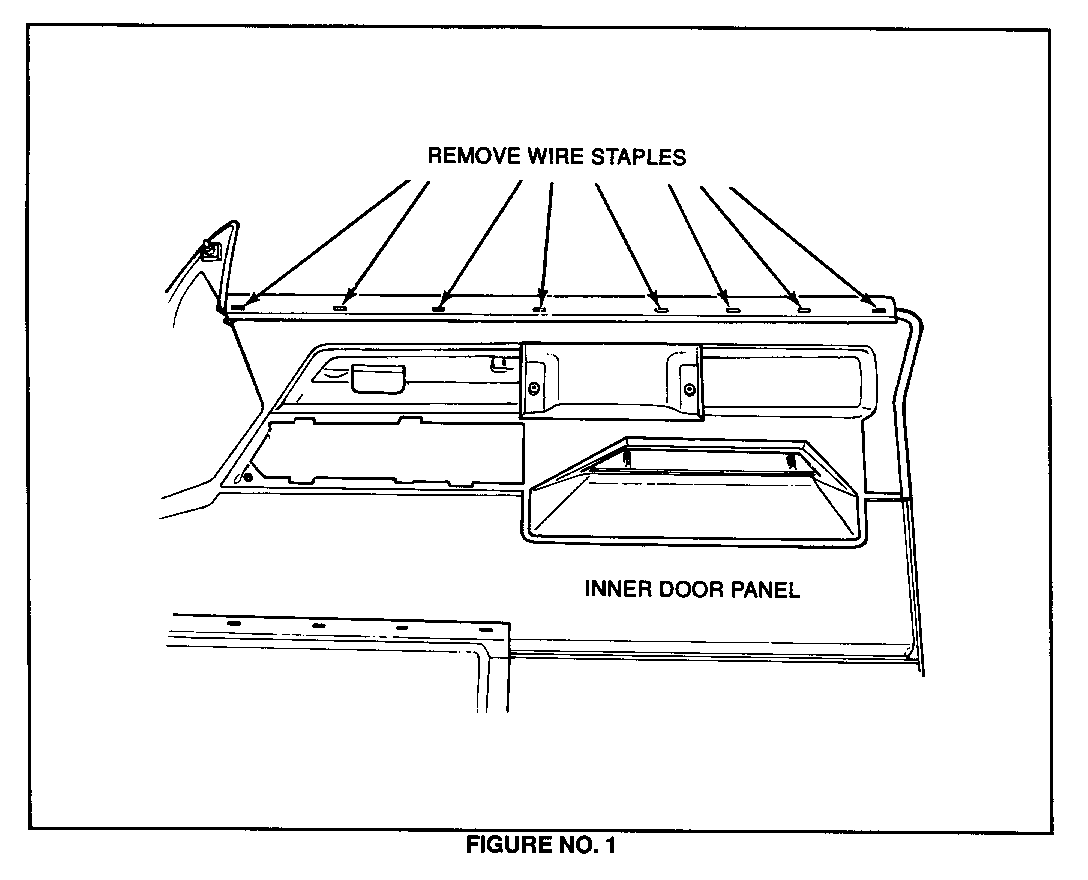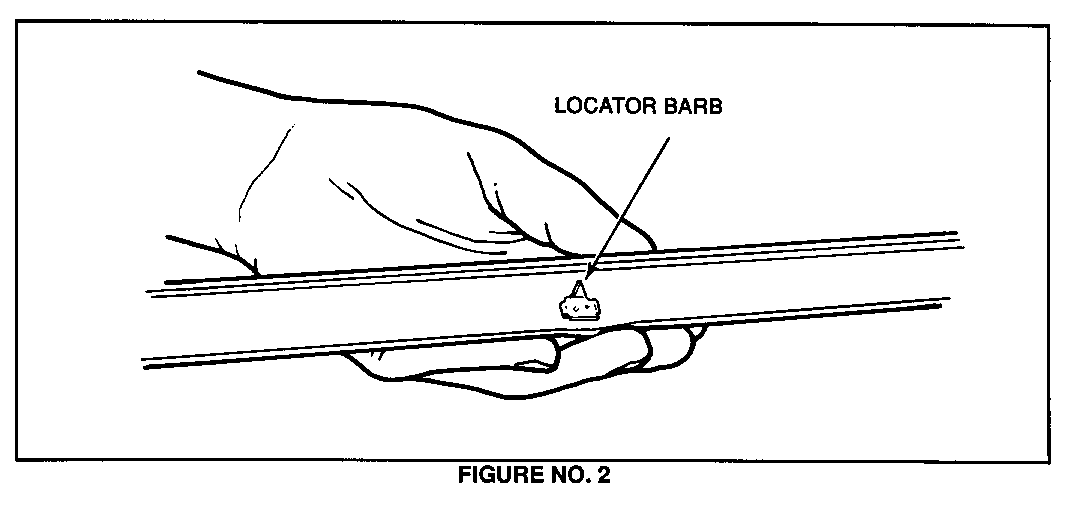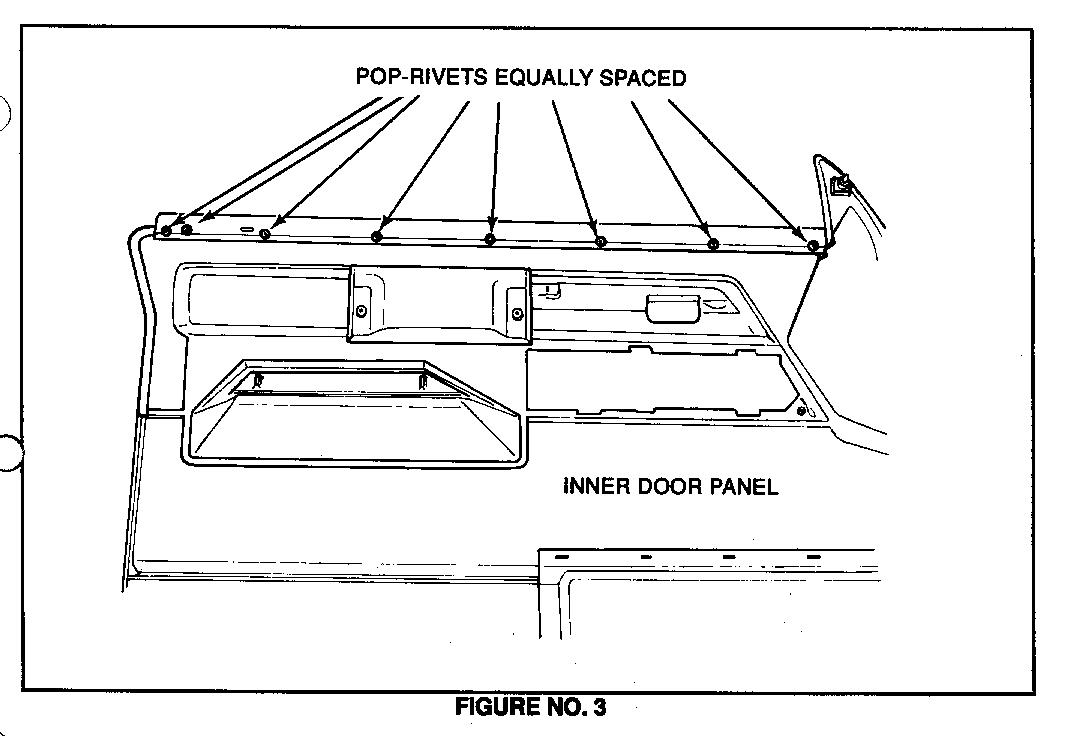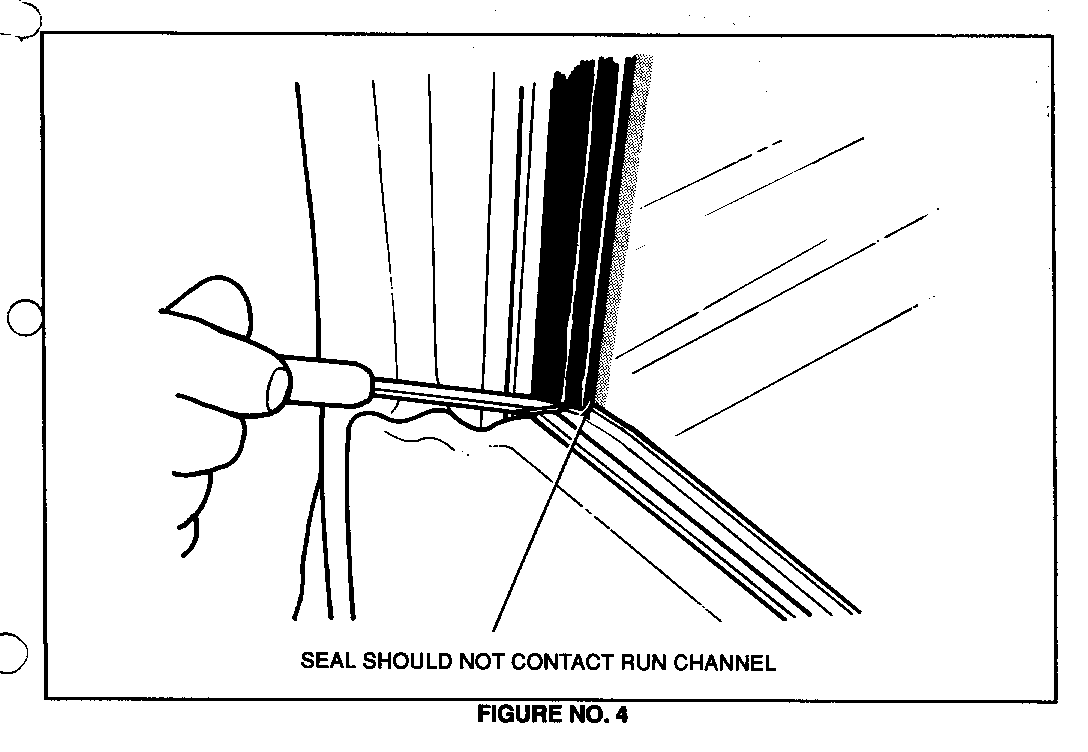DOOR GLASS INNER-SEAL BECOMES DETACHED

Model and Year: 1988 C/K 1-3
The door glass inner seal may become detached from the door panel due to an incorrect attachment procedure used in production (see Figure 1). Excessive air stapler pressures allow the attachment flange of the seal to tear as the window is cycled. This has been corrected in production. If separation occurs, the condition can be corrected by replacement of the seal, serviced under the following part numbers:
15603485 - Left 15603486 - Right
Parts are currently available from GMSPO.
NOTE: It is NOT necessary to replace the entire door panel assembly.
The following procedure is recommended to re-attach the seal:
1. Remove the door inner panel.
2. Remove the existing seal (if partially attached), and extract the production installed wire staples.
3. Locate the new seal by using the locator hole on the door panel and the barb on the back side of the seal flange (see Figure 2). Temporarily clamp the seal in the location.
4. Drill (8) 1/8" holes evenly spaced along the lengthof the seal flange at locations not previously occupied by a wire staple. Locate the end holes as close to the outer ends of the seal as possible.
5. Using 1/8" diameter pop-rivets having a minimum of 3/8" clamping shank depth, install the 8 rivets, using reinforcing washers on both the seal and door panel sides.
NOTE: Use of reinforcing washers is essential for a permanent repair (see Figure 3).
6. Re-install the door panel and cycle test the windows. The front and rear run channels located on the glass should not contact the seal lip (see Figure 4). If contact exists, carefully trim the seal to provide ample clearance.
7. After completion of the repair check door glass/seal wipe pressure. The wiping area of the seal should exhibit a very light but consistent pressure against the glass. If seal loading is determined to be excessive, remove the panel and reduce the seal pressure by the door inner panel as shown in Figure 5. Re-check the seal action after door panel installation.
For vehicles under warranty, use:
Labor Op: T7820 Left Door T7821 Right Door Labor Time: .5 Hrs per door Add: .1 Hrs per door with power window





General Motors bulletins are intended for use by professional technicians, not a "do-it-yourselfer". They are written to inform those technicians of conditions that may occur on some vehicles, or to provide information that could assist in the proper service of a vehicle. Properly trained technicians have the equipment, tools, safety instructions and know-how to do a job properly and safely. If a condition is described, do not assume that the bulletin applies to your vehicle, or that your vehicle will have that condition. See a General Motors dealer servicing your brand of General Motors vehicle for information on whether your vehicle may benefit from the information.
